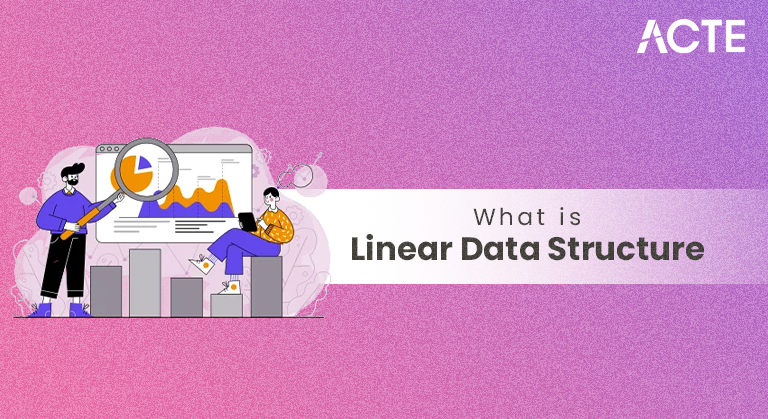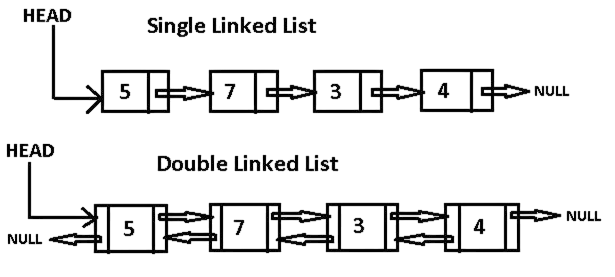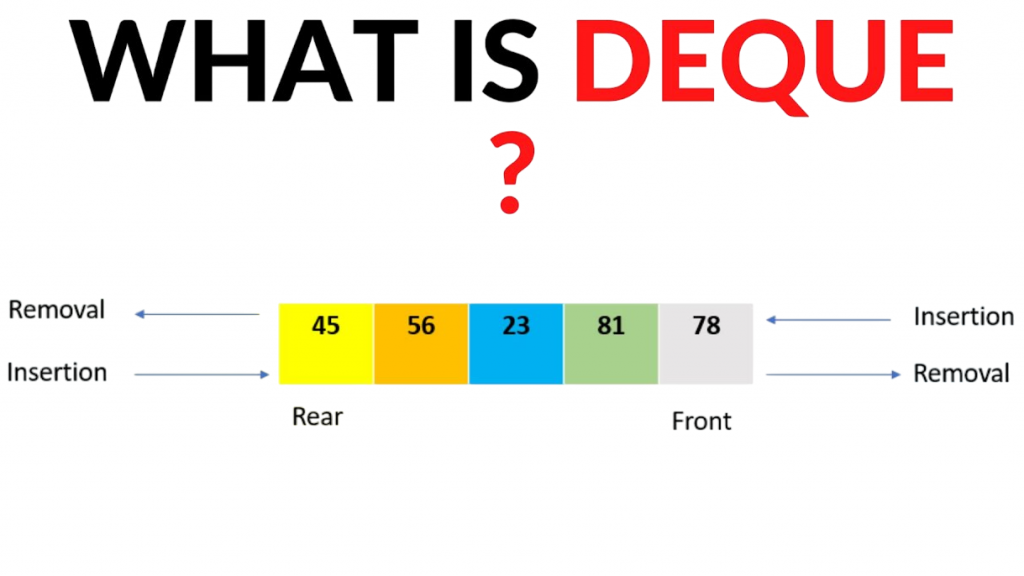
- What is a Linear Data Structure?
- Arrays
- Linked Lists
- Stacks
- Queues
- Double-Ended Queues
- Operations: Insert, Delete, Search
- Time and Space Complexity
- Applications in Real Life
- Differences with Non-Linear Structures
- Implementation Tips
- Summary
What is a Linear Data Structure?
A linear data structure is a way of organizing data elements sequentially, where each element is connected to the one before and after it. These structures allow traversal of data in a single level, making it simple to implement and manage. To gain deeper insights into such linear data structures and their role in efficient programming, exploring Python Training reveals how mastering Python equips developers to handle lists, tuples, and arrays with precision laying the groundwork for scalable and maintainable code. The data elements are stored in a linear order, which can either be static like arrays or dynamic like linked lists. Unlike non-linear structures, where data is organized in multiple levels (like trees or graphs), linear structures follow a strict sequence, simplifying operations such as insertion, deletion, and traversal.
Interested in Obtaining Your Python Certificate? View The Python Developer Course Offered By ACTE Right Now!
Arrays
Arrays are one of the simplest and most commonly used linear data structures. An array is a collection of elements stored at contiguous memory locations. The elements can be accessed directly using their index, making it efficient for retrieval. However, arrays have a fixed size, which must be defined at the time of declaration. To manage such constraints while designing scalable and flexible systems, exploring Bubble Sort Algorithm reveals how abstraction helps developers hide implementation details, reduce complexity, and build modular code that adapts to changing requirements. This limitation can lead to inefficient memory use if the array is not fully utilized or if more space is required than initially allocated. Arrays are ideal for scenarios where the number of data elements is known and constant.
Linked Lists
- A linked list is a dynamic linear data structure where each element, known as a node, contains data and a reference (or link) to the next node in the sequence. Unlike arrays, linked lists do not require contiguous memory allocation and can grow or shrink at runtime.
- This makes them more flexible in terms of memory usage. There are different types of linked lists: singly linked lists, doubly linked lists, and circular linked lists, each with its own method of linking nodes. Linked lists are especially useful in applications where frequent insertions and deletions are required.
- A stack is a linear data structure that follows the Last In, First Out (LIFO) principle. This means the last element added to the stack is the first one to be removed. Stacks are used extensively in programming for tasks such as expression evaluation, backtracking algorithms, and memory management.
- The two primary operations on a stack are push (to add an element) and pop (to remove an element). Stacks can be implemented using arrays or linked lists and are a fundamental structure in computer science due to their simplicity and utility. To explore how stacks fit into broader problem-solving strategies, diving into Important Data Structures and Algorithms reveals how mastering core concepts like stacks, queues, trees, and graphs empowers developers to write efficient, scalable code across diverse applications.
- Linear data structures support several fundamental operations. Insertion involves adding an element to the structure. Deletion removes an element, and searching finds whether a particular element exists. The performance of these operations can vary depending on the type of data structure.
- For example, insertion and deletion are faster in linked lists than in arrays due to the dynamic nature of memory allocation. Searching, however, may take longer in linked lists since it requires traversal from the head to the desired node, unlike arrays where elements can be accessed directly by index.
- The efficiency of linear data structures is often measured in terms of time and space complexity. Arrays allow constant-time access (O(1)) but can have expensive insertion and deletion operations (O(n)) due to shifting elements. Linked lists provide efficient insertion and deletion (O(1) at the beginning).
- Stacks and queues, depending on implementation, generally offer O(1) time for push/pop and enqueue/dequeue operations. Understanding these complexities is essential for choosing the right data structure for a given problem.
- When implementing linear data structures, it’s important to consider the specific requirements of your application. Use arrays when you need fast access and the size is known. Choose linked lists when flexibility in size is needed.
- For tasks requiring backtracking or undo operations, stacks are ideal. Use queues when order of processing is critical. Deques are best when you need access from both ends. Additionally, always handle edge cases, such as underflow and overflow, and optimize memory usage where possible.

Gain Your Master’s Certification in Python Developer by Enrolling in Our Python Master Program Training Course Now!
Stacks
Queues
Queues are linear data structures that follow the First In, First Out (FIFO) principle. The first element added to the queue is the first one to be removed. Queues are commonly used in scenarios where order needs to be preserved, such as task scheduling, printer spooling, and breadth-first search in graphs. To implement these structures efficiently and understand their role in algorithm design, exploring Python Training reveals how mastering Python equips developers to build queue-based systems using built-in modules, custom classes, and real-world problem-solving techniques. The main operations in a queue are enqueue (to add an element) and dequeue (to remove an element). Like stacks, queues can be implemented using arrays or linked lists.
Double-Ended Queues (Deque)
A double-ended queue or deque is a versatile linear data structure where elements can be added or removed from both ends. This allows for more flexible data manipulation and can be used to implement both stacks and queues.

To understand how language choice affects such implementations, exploring Graph Traversal in Data Structure reveals how each language handles memory management, concurrency, and syntax helping developers decide which is better suited for building efficient data structures and scalable applications. Deques are particularly useful in scenarios that require access to both the front and rear ends of the sequence, such as in palindromic checking, sliding window algorithms, and real-time task scheduling.
Are You Preparing for Python Jobs? Check Out ACTE’s Python Interview Questions and Answers to Boost Your Preparation!
Operations: Insert, Delete, Search
Time and Space Complexity
Applications in Real Life
Linear data structures have wide applications in everyday computing. Arrays are used in image processing and matrix computations. Linked lists are used in implementing dynamic memory allocation and file systems. Stacks are crucial in function call management, undo mechanisms in software, and syntax parsing. To understand how such structured logic extends to web service communication, exploring Merge Sort Algorithm reveals how these two protocols handle data exchange, reliability, and scalability helping developers choose the right approach for building robust APIs and service-oriented architectures. Queues are used in handling requests in operating systems, customer service systems, and streaming data. Deques are often used in implementing caches and scheduling systems. Each of these structures plays a significant role in building efficient and effective software systems.
Differences with Non-Linear Structures
The main difference between linear and non-linear data structures lies in the arrangement of data. Linear structures organize data sequentially, making them easier to implement and traverse. Non-linear structures like trees and graphs, on the other hand, arrange data in hierarchical or networked formats, allowing for more complex relationships and operations. To experiment with these structures efficiently, exploring Data Structure Definition reveals how the right development environment can streamline coding, debugging, and visualization making it easier to implement and manage advanced data models. Linear structures are generally more suitable for simpler, sequential tasks, while non-linear structures are better for representing relationships like family trees, organizational charts, or network routing paths.
Implementation Tips
Summary
Linear data structures are foundational elements in computer science and software development. Their sequential nature makes them intuitive and easy to implement. From arrays and linked lists to stacks, queues, and deques, each structure has its strengths and ideal use cases. Understanding their characteristics, operations, complexities, and applications allows developers to choose the most efficient structure for their needs. To build this decision-making ability through hands-on practice and expert guidance, exploring Python Training reveals how mastering Python’s core data structures empowers developers to write optimized, scalable code tailored to real-world challenges. As building blocks for more complex systems, mastering linear data structures is essential for any aspiring programmer or computer scientist.





